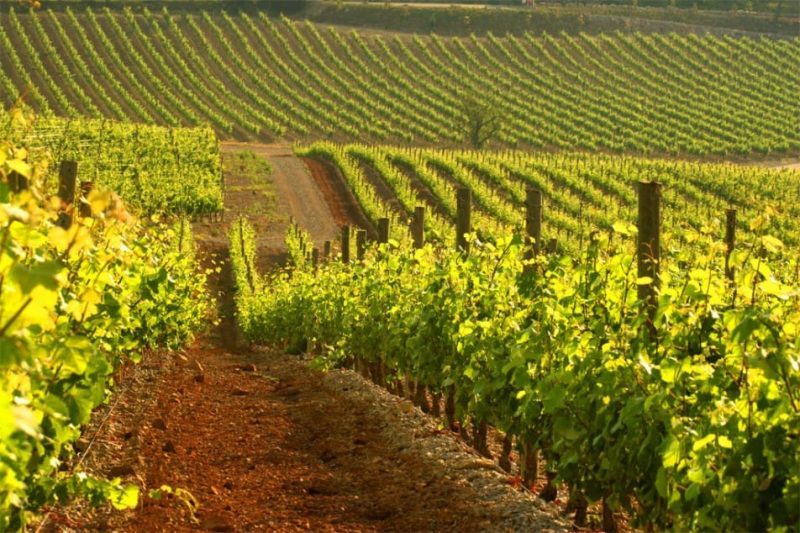It is the term “territory/soil” that provides the base for the designations of origin (Appellations d’Origine). These designations are managed and controlled by the INAO (National Institute for Origin and Quality). In France, there are more than 290 controlled designations of origin (Appellations d’Origine controlées, AOC) among almost 500 protected French appellations and designations of origin of French wines (AOVDQS, VDP, VDT, IGP and AOC). Numerous regional wine producers and winemakers invest a lot to obtain these designations for their work and the quality of their wines.
Why an AOC or a Protected Designation of Origin (Appellation d’Origine Protégée, AOP)?
Now, a few details about the origin of the concept of the designations of origin: The initiative resulted from the fight against the increasing number of frauds since the beginning of the 20th century. The first idea in this regard has been defined in the Act of 1905. In 1935, a decree for the creation of a system for the protection and control of the wine market was issued. This system was supposed to be managed by a committee, which later became the National Institute for Origin and Quality (I.N.A.O.). In the early 1990s, this attempt for the protection of national territory covered all
agricultural and food products. A few years later, as an idea for the support of agricultural products, the French government demanded the creation of a European regulation, the AOP, which is the European equivalent to the AOC.
In 1992, the concept of the AOP only covered agricultural products, handmade products and food products, but in 2009, French politics expanded the concept to the wine sector. Since then, this concept guarantees a knowhow and implies the adherence to
certain regulations according to the defined geographical area. Regarding the wine sector, the AOC provides conditions for every single work step, for the production, further processing and the winemaking. Nowadays, wines and life waters are the only products that can have both designations, AOC and AOP.
The protected geographical indication was determined and introduced at the same time and in the same sense as the Protected Designation of Origin. For obtaining these designations, it is already enough to practice at least one production step (protection, processing or elaboration) of the product within the defined geographical area.
As you may have already noticed, the designations of origin are not subject to the same restrictions on the obligations to be respected, but each is directly linked to the know-how of the place of origin and the geographical areas.
But what is the term “Protected geographical indication”?
The protected geographical indication stands for agricultural products, whether raw or processed, whose reputation and quality as well as other characteristics are directly linked to their geographical origin.
- There are approximately 92 winegrowing regions with the designation “protected geographical indication”.
Which guarantees are provided by the designation “controlled origin (AOC)”?
This designation of origin stands for all products which apply to every single criterion demanded by the AOP. It protects their designation on French territory and may also apply to products that are not covered by the European regulation. The designation AOC is the real symbol for territory and respect for the traditions and the knowhow of a well-defined and thus unique region. That is why the designation AOC guarantees wines out of grapes that were planted in a winegrowing region, cultivated on defined plots and vinified according to the regulations laid down by the INAO. The winemaker will implement all these terms, depending on his territory, either with more or less finesse, thanks to his traditions and techniques.
The „Protected Designation of Origin (Appellation d’Origine Protégée, AOP)“: A method of culture, winemaking and taste
This term stands for products that were produced with a knowhow specific for the region, which gives them their characteristics in the same geographical area. Thus, the term also makes it possible to protect the name of the product throughout the European Union.
What are the different appellations per region and French vineyard?
We will present you three of the most important winegrowing regions, which include numerous designations of origin and you will understand why!
- The vineyard of Burgundy (83 AOC-AOP und 5 IGP)
The region of Burgundy is known for its numerous historic monuments, its rich culture and its various natural sites. As little anecdote: The Duke of Burgundy – Philippe le Hardi – once decided to stop the planting of Gamay in Burgundy! It was replaced by the famous Pinot Noir, which became a real success thanks to the subjects of the French kingdom. From one climate to another, one now appreciates the aromatic diversity of this emblematic grape variety of the region. However, the Pinot Noir is not the only one, who is described as the “great” grape variety of the appellation; it shares its reputation with the Chardonnay. These two grape varieties are allowed in the region of Burgundy and several winegrowing domains create fantastic wines!
- The vineyard of Languedoc-Roussillon (28 AOC-AOP und 26 IGP)
With a surface of 245,000 hectares planted with vines, this vineyard is one of the most extensive ones in France. It was created by the Greeks and Romans during the expansion of the vineyard of Provence. This is a region that gathers many highly talented winemakers, who, thanks to the grape varieties Grenache and Syrah, conjure up magnificent, very aromatic and typical wines.
- The vineyard of the Loire region (52 AOC-AOP und 8 IGP)
The vineyards of the Loire region have the prestige of having access to many of the numerous historic châteaux of France. The vineyards of the Loire valley that are more than 1000 kilometres long, follow the river from its source, the Massif Central, to its estuary in Nantes. While having a glass of the Loire region’s wine, wine tourists can admire these wonders of French architecture.
Thanks to the production of wines with great finesse and an impressive elegance, the winemakers have extremely contributed to the valorisation of the Loire region’s vineyards!





